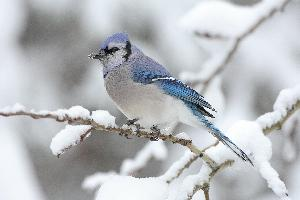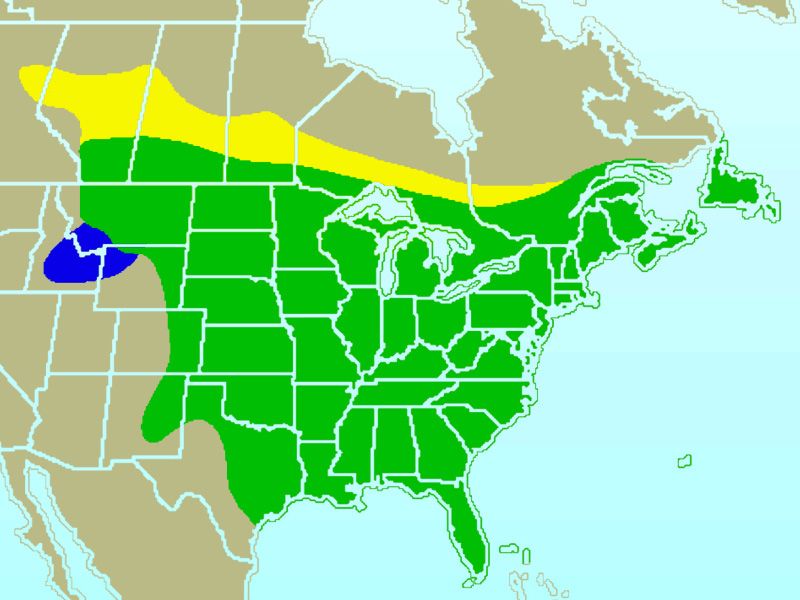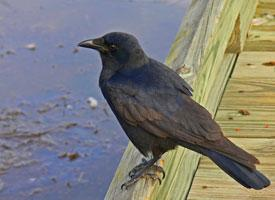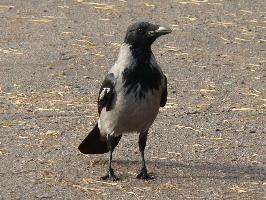
Poids et mesures
| Longueur | de 22 à 30 cm |
|---|---|
| Poids | de 70 à 100 g |
| Vitesse | de 32 à 40 km/h |
| Envergure des ailes | de 34 à 43 cm |
Description de l'animal
The Blue Jay (Cyanocitta cristata) is a striking and recognizable bird native to North America, known for its vibrant blue plumage and loud, jay! jay! calls. A member of the Corvidae family, which also includes crows and ravens, Blue Jays are intelligent and adaptable birds, exhibiting a wide range of behaviors and vocalizations that have fascinated bird watchers and researchers alike.Physical Characteristics:
The Blue Jay is a medium-sized bird, typically measuring between 9 to 12 inches in length, with a wingspan of approximately 13 to 17 inches. They have a prominent crest on their head, which can be raised or lowered depending on the bird's mood. The upper parts of their body are bright blue, with white underparts and a distinct black, blue, and white banding on the wings and tail. Their face is white with a black collar around the neck, and they have a stout, black bill.
Habitat and Range:
Blue Jays are highly adaptable birds that can be found in a variety of habitats across the eastern and central United States, southern Canada, and parts of northeastern Mexico. They thrive in mixed woodlands, especially those with oak and beech trees, but are also common in suburban and urban areas, where they are known to visit bird feeders.
Behavior:
Blue Jays are known for their intelligence and complex social structures. They are highly vocal birds, capable of mimicking the calls of other bird species, including hawks, which they sometimes use to scare away other birds from food sources. Blue Jays are also known for their acorn hoarding behavior; they are vital in the spread of oak forests as they forget where they have stored some of their acorns, allowing them to germinate.
Diet:
Their diet is omnivorous, consisting of a variety of plant and animal materials. This includes seeds, nuts (especially acorns), grains, fruits, insects, small vertebrates, and occasionally eggs and nestlings of other birds.
Reproduction:
Blue Jays are monogamous birds, and pairs form long-lasting bonds. They typically breed from March to July, building nests in the branches of trees. The female lays between 3 to 6 eggs, which she incubates for about 16 to 18 days. Both parents participate in feeding and protecting the nestlings. The young fledge approximately 17 to 21 days after hatching but may stay with their parents for one to two months thereafter.
Conservation Status:
Currently, the Blue Jay is listed as Least Concern by the International Union for Conservation of Nature (IUCN), indicating that it is not at immediate risk of population decline. However, like many bird species, they face threats from habitat destruction and fragmentation.
In conclusion, the Blue Jay is a fascinating and beautiful bird, renowned for its striking appearance and complex behaviors. Its adaptability to both wild and urban environments has made it a familiar sight to many, embodying the beauty and intelligence of the avian world.
Carte de répartition

Animaux similaires
Nouvelles photos d'animaux
Top 10 des animaux
- Dolphin gull (Leucophaeus scoresbii)
- Diana monkey (Cercopithecus diana)
- Moustached guenon (Cercopithecus cephus)
- Galápagos tortoise (Geochelone nigra complex)
- Stone loach (Barbatula barbatula)
- Japanese macaque (Macaca fuscata)
- Russian tortoise (Testudo horsfieldii)
- Greek tortoise (Testudo graeca)
- Common flying dragon (Draco volans)
- Vendace (Coregonus albula)


